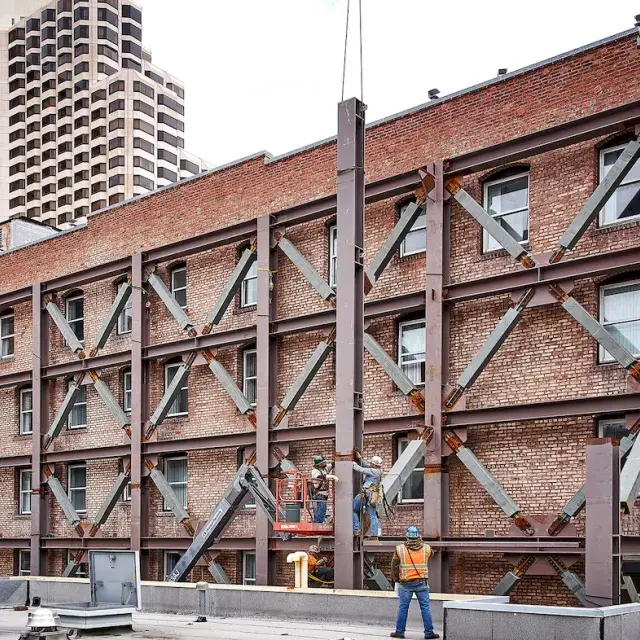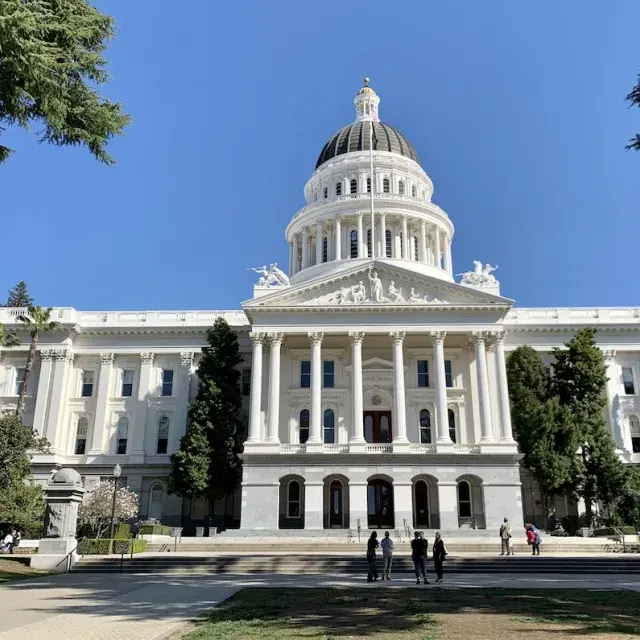Today’s single-family zoning regulations were born out of decades-old racist housing policies and practices. They continue to exclude people with low- or moderate-income who cannot afford single-family homes. This contributes to racial and economic inequities in the U.S. housing system, including racial homeownership gaps, housing supply and affordability challenges, and climate change risks.
There is no one-size-fits-all strategy for addressing the negative impacts of exclusionary single-family zoning. However, rezoning land to allow for low-density multifamily (LDMF) housing has the potential to help communities address some of these impacts.
Our new white paper, titled Barriers and Opportunities to Creating Low-Density Multifamily Housing, explores the potential positive outcomes of allowing LDMF development in areas previously reserved for single-family development, as well as prominent regulatory and financing challenges to creating this type of housing.
What is LDMF Development?
There is no single agreed upon definition of LDMF development in the housing industry. Our research defines this type of development as one that would stand somewhere between single-family development and high-density multifamily development, depending on the market. For example, LDMF housing in New York City is likely vastly different in Portland, Oregon or Minneapolis, Minnesota.
What Could Permitting LDMF Development Help Accomplish?
Rezoning land to allow for LDMF housing has the potential to help communities address some of the negative impacts of exclusionary zoning, including:
- local opposition to higher density by ensuring residents that less restrictive zoning codes will not lead to towering apartment buildings
- markets’ supply and affordability challenges by increasing the number of homes available to people with low- and moderate-incomes
Prominent Regulatory Barriers to LDMF Housing
Although zoning regulations vary by jurisdiction, there are prominent zoning requirements that have implications for the feasibility of LDMF housing development.
For example, when land is rezoned to permit this type of development, municipal governments must ensure that underlying zoning regulations, including requirements governing minimum lot size, development bulk (such as floor area ratio; maximum lot coverage; and setbacks) and minimum on-site parking, allow for and don’t negatively impact LDMF development.
In addition, communities can allow for the by-right development of this type of housing. By-right zoning means that a proposal would receive a building permit under a ministerial review. This allows developers to receive building permits without additional reviews and public hearings or meeting additional conditions.
Prominent Challenges to Financing LDMF Housing
A key factor impacting the financial viability of LDMF housing development is the cost of land. Developers may have to acquire adjacent parcels from multiple owners. This often leads to higher purchase prices to incentivize holdouts to sell their lots. The characteristics of developable land can also have a significant impact on cost. For example, the cost will increase if lots that will be combined have existing structures that add value.
Housing developers and experts agree that access to financing is a common challenge to developing LDMF housing. Barriers stem from the scale of development and the fact that these properties are often pursued by small-scale developers. Common barriers to financing LDMF development include:
- Challenges in securing equity debt financing
- Challenges in securing debt capital including:
- Fixed mortgage origination and servicing costs
- Restrictive loan underwriting capacity requirements
- Perceived risk in loan underwriting
Key Policy Takeaways
Supporting the development of LDMF requires addressing the regulatory and financial barriers to creating this type of development at scale. This could include reviewing zoning regulations to ensure that they won’t inhibit or restrict the development of LDMH housing. Other options include providing financing options to small-scale developers and creating lending products that are tailored for financing this type of development.
You can read the full white paper on the Enterprise website and subscribe to our daily and bi-weekly policy newsletters for updates on our policy research.


